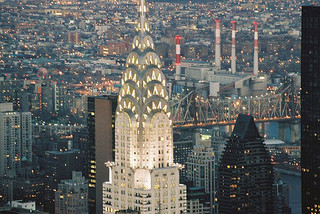Posted by George Sweeting, April 2, 2014
The state may have blocked the Mayor’s proposal to raise the personal income tax on high earners, but now Albany has presented City Hall with a new tax question: whether to go along with business tax changes that could cost the city hundreds of millions of dollars in tax revenue and are likely to result in big tax cuts for some banks. The state budget includes important but little-discussed changes in state business taxes that City Hall will likely come under great pressure to follow.
Until now, the city and the state have each had an income tax for banks, separate from the city and state income taxes on corporate businesses. The bank and corporate taxes have different rules and tax rates, although in recent decades the structural differences between banks and other corporations has been blurring. Last year, the Governor’s Commission on Tax Reform and Fairness recommended ending the state’s bank tax and extending the state corporate tax to cover banking corporations to ease tax compliance costs and reduce opportunities for gaming the system by firms seeking the most advantageous tax treatment. There will be winners and losers under the changes. Some banks and corporations will reap savings, while others may see higher tax bills. Which category the banks and other firms fall into will depend on the nature of their business operations.
The new state budget eliminates the bank tax while also making other changes to the state’s corporate tax. Eliminating the bank tax costs the state tax revenue because of differences in how income is allocated; the other changes include some provisions that will increase the state’s tax revenue and others that will reduce it. For now, the state has only provided an estimate that the net impact of all of the business tax changes is a loss of $205 million in tax revenue in state fiscal year 2015-2016, which grows to losses of over $500 million after three years.
There is usually strong pressure for the city to conform to state business tax changes to maintain broad alignment in the tax structure and ease the compliance burden for the many businesses subject to both city and state income tax. Beginning in January 2008, the state fully phased in changes in the way it taxes firms with operations here and outside New York to what is called the single sales factor, providing many businesses with tax savings at considerable cost to state tax revenue. The city followed suit, phasing in the singles sales factor over 10 years. Conversely, when the state dropped its unincorporated business tax, the city did not conform.
While no estimate has been publicly released, following the state’s lead by shifting banks to the general corporate tax would almost certainly cost the city a significant share of the over $4 billion of revenue IBO expects the combined bank and corporate taxes to generate in city fiscal year 2015. How much will depend on whether that change is accompanied by others that could raise revenue, but based on what we know about the effect on the state level, the revenue loss could be in the hundreds of millions.
The challenge for City Hall will be navigating between the arguments for the economic benefits of moving to a simpler and easier tax system for financial firms and the likely loss of tax revenue needed to fund the de Blasio Administration’s agenda. Much of this will be fought out in Albany, which must approve any changes to the city’s businesses taxes, perhaps as early as June when the current session ends.

